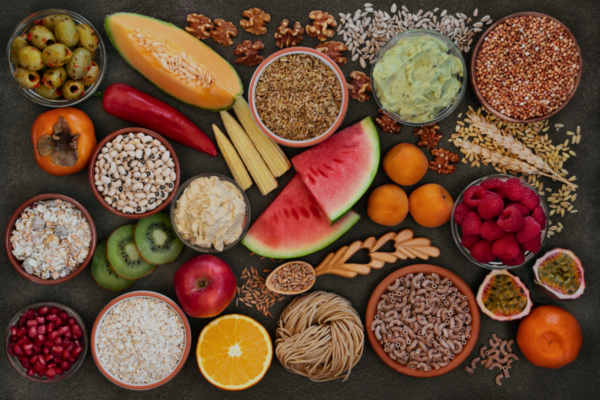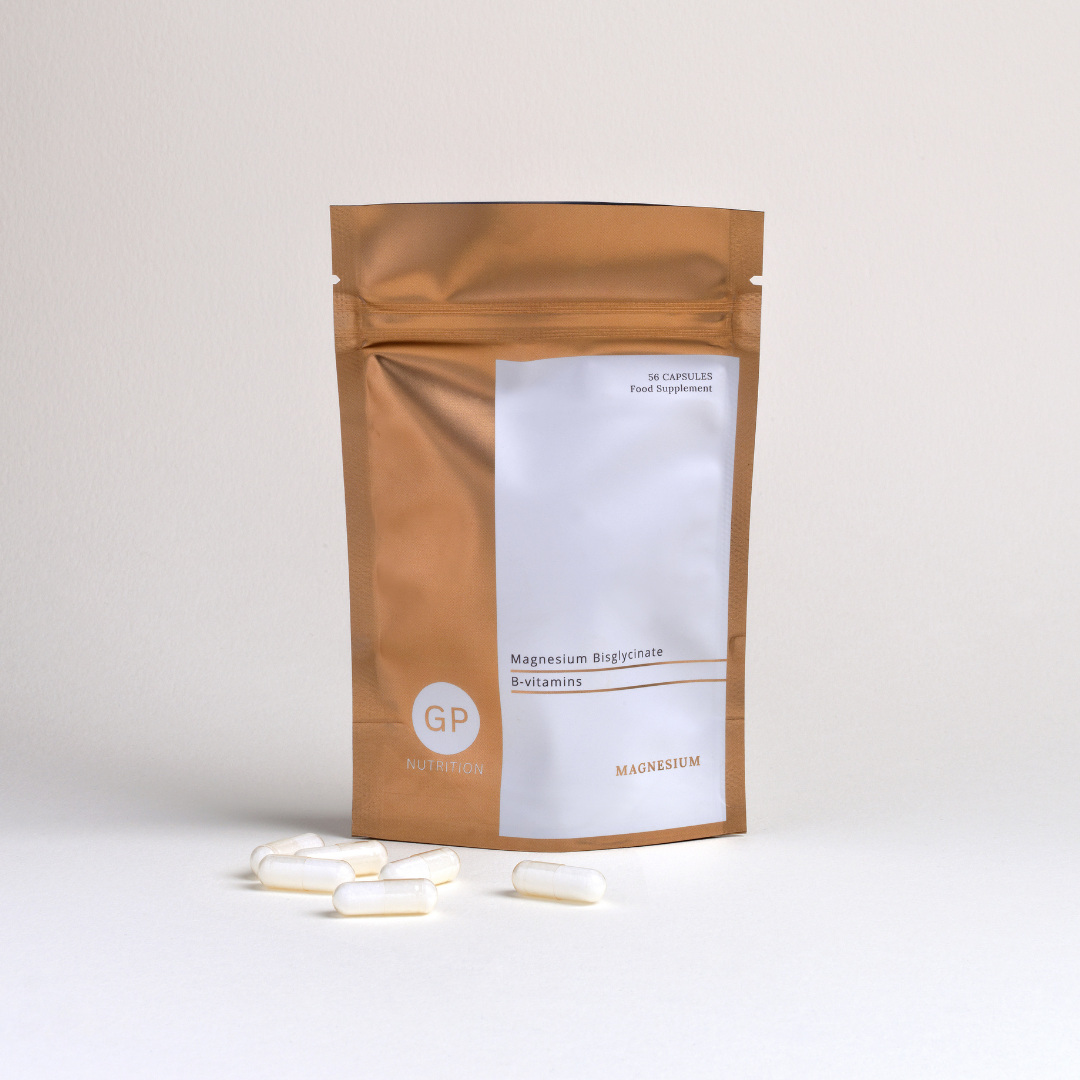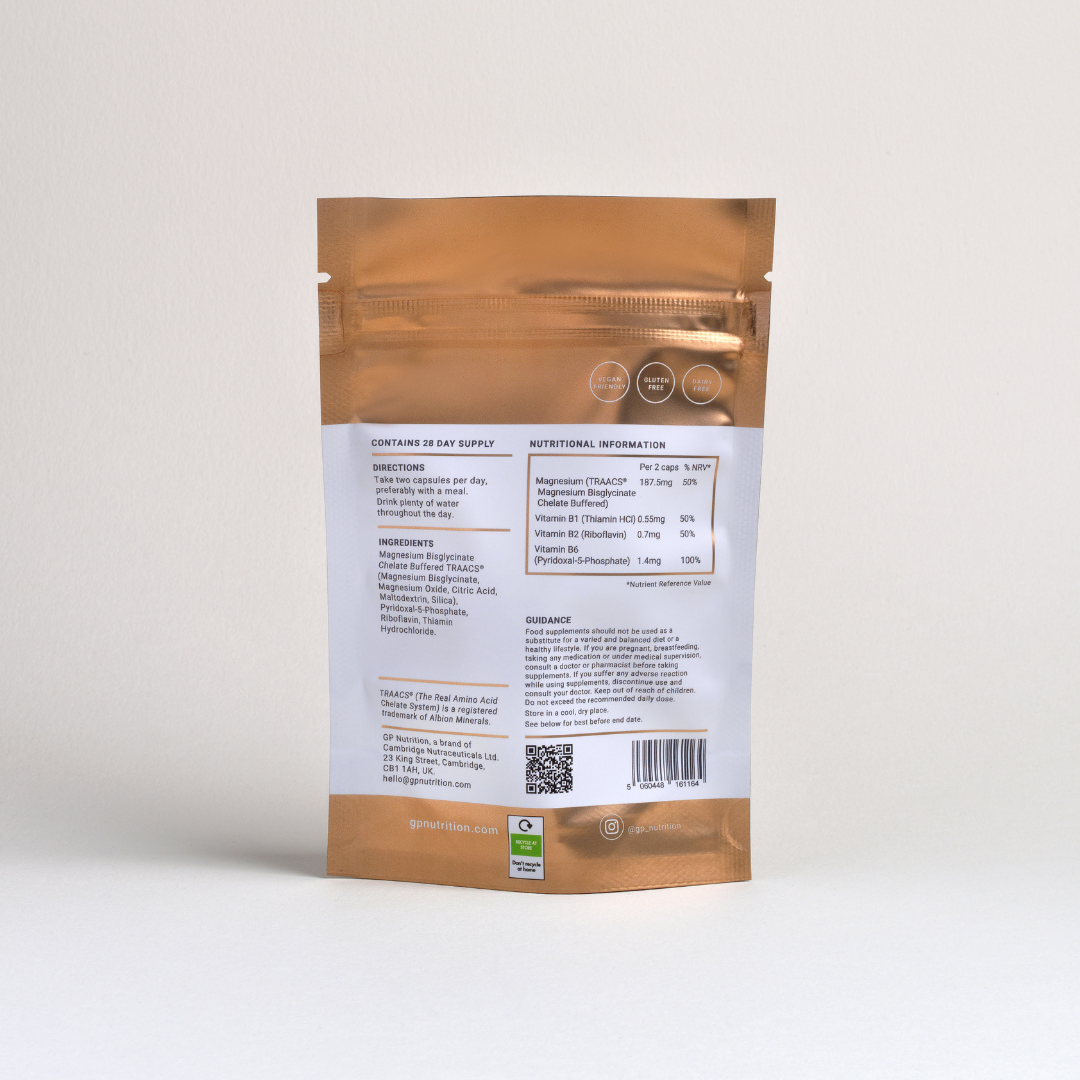NAD is a tiny but essential molecule that fuels your daily energy and plays a key role in longevity. Here’s how it works – and how to make sure you have enough.
Nicotinamide adenine dinucleotide – better known as NAD – has become a buzzword in wellness and longevity circles, and for good reason. NAD is a molecule found in every cell of your body, where it plays a vital role in turning food into energy, repairing DNA and keeping your cells healthy.
How does NAD work?
NAD exists in two forms – NAD+ (its oxidised form) and NADH (its charged form). Together, they act a little like a rechargeable battery inside your cells.
When you eat, NAD+ collects energy from food, becoming NADH in the process. The NADH then helps power the mitochondria – your cells’ “power stations” – to generate the energy you need for everything from movement to repair. Once the charge is used up, NADH becomes NAD+ again, ready to restart the cycle.
This constant flow between NAD+ and NADH keeps your cells – and you – energised, active and resilient.
Why NAD+ matters for healthy ageing and longevity
As we get older, our natural NAD+ levels steadily decline – and that can quietly influence how we feel and function over time.
Lower NAD+ levels means our cells become less efficient at repairing themselves, managing energy and responding to everyday stress. It’s one of the reasons why we start to notice shifts in vitality, slower recovery, or subtle signs of ageing as the years go by.
Because NAD+ supports the processes that keep our cells youthful and resilient, it’s increasingly seen as a key player in biological age – the measure of how “old” our body is at a cellular level, rather than the number of birthdays we’ve had.
NAD+ decline can also be a factor in age-related diseases like inflammation, neurodegenerative disorders, heart disease and cancer. Scientists are now discovering that maintaining healthy NAD+ levels may help support:
-
Cellular energy – by fuelling your mitochondria, the tiny powerhouses that drive every movement, thought and repair process
-
Metabolic balance – by helping your body use energy efficiently and maintain stability over time
-
Cell renewal and repair – by supporting sirtuin enzymes that protect and repair your DNA and keep your cells working at their best. Sirtuins are strongly linked to longevity by reducing cellular senescence (cell ageing) and slowing telomere shortening – the process that limits how many times a cell can renew itself.
In short, NAD+ helps sustain the energy, balance and cellular health that underpin long-term wellbeing – making it one of the most intriguing areas of modern wellness science.
Can you increase your NAD+ levels naturally?
Your body can make NAD+ using ‘precursor’ nutrients found in food – especially certain forms of vitamin B3 (niacin). We can get vitamin B3 from foods like legumes, nuts, whole-grain cereals, fish or cow’s milk.
But your diet alone may not always provide enough of these building blocks to keep up with what we need as we age.
Taking NAD+ directly as a supplement won’t make any difference to your NAD+ levels, as the molecule quickly degrades outside the cell.
That’s where nicotinamide riboside (NR) comes in. Discovered to be a NAD+ precursor in 2004, NR is a form of vitamin B3 that’s been shown in studies to safely boost people’s NAD+ levels in as little as two weeks.
Getting regular exercise, eating a healthy, balanced diet and getting enough sleep also helps your cells to keep maintaining NAD+ production.
How VitaliseMe supports NAD+ levels
At GP Nutrition, we believe in supporting your wellbeing at every level – from your everyday energy and focus to your long-term longevity. VitaliseMe is a daily complex designed to nourish your body’s natural NAD+ cycle – with a dose of NR plus added nutrients that help to maintain healthy levels of this vital molecule.
Each capsule of VitaliseMe contains:
300mg nicotinamide riboside – a form of vitamin B3 shown by studies to swiftly and safely build and support your NAD+ levels
Resveratrol and catechins (EGCG) from green tea extract – both are powerful polyphenols with a long list of longevity benefits – from supporting your body’s NAD production and protecting your cells from oxidative stress to promoting sirtuin activity, boosting metabolism, reducing inflammation, and helping to balance blood sugar levels
Vitamins B6, B12, C and zinc – to support energy levels, cell renewal and repair, and further defend against oxidative stress
“I love VitaliseMe because it helps your body feel energised and supported from the inside out with a proven NAD+ precursor, sirtuin stimulants and longevity-supporting antioxidants,” says Gabriela Peacock, founder of GP Nutrition. “It’s designed to promote vitality at a cellular level – combining vitamin B3 with powerful polyphenols to nourish your cells, boost energy levels and promote healthy ageing.”
NAD+ may be a tiny molecule, but its role in your health is anything but small. It keeps your cells charged and functioning – helping you feel energised, balanced and ready to take life in your stride.
By supporting your NAD+ levels through smart nutrition, self-care and supplements like VitaliseMe, you can help your body stay vibrant and resilient at every age.
References
1. P. Raven and G. Johnson, Chapter 9, “Biology,” 6th Edition, Mc-Graw-Hill Companies, New York, 2002.
2. Zapata-Pérez R, Wanders RJA, van Karnebeek CDM, Houtkooper RH. [NAD+ homeostasis in human health and disease](https://pubmed.ncbi.nlm.nih.gov/34041853/) EMBO Mol Med. 2021 May 27:e13943.
3. EFSA NDA Panel (EFSA Panel on Dietetic Products, Nutrition and Allergies). [Scientific opinion on dietary reference values for niacin. EFSA Journal. 2014; 12(7):3759](https://www.efsa.europa.eu/en/efsajournal/pub/3759)
4. [Tolerable Upper Intake Levels for Vitamins and Minerals (2006).](https://www.efsa.europa.eu/sites/default/files/efsa_rep/blobserver_assets/ndatolerableuil.pdf) EFSA Scientific Committee on Food, Scientific Panel on Dietetic Products, Nutrition and Allergies.
5. Hwang ES, Song SB. [Nicotinamide is an inhibitor of SIRT1 in vitro, but can be a stimulator in cells.](https://pubmed.ncbi.nlm.nih.gov/28417163/) Cell Mol Life Sci. 2017;74(18):3347-3362.
6. Mehmel M, Jovanović N, Spitz U. [Nicotinamide Riboside-The Current State of Research and Therapeutic Uses.](https://pubmed.ncbi.nlm.nih.gov/32486488/) Nutrients. 2020;12(6):1616.
7. SK, Sifat AE, Haque S, Nahid NA, Chowdhury S, Mehedi I. [Nicotinamide Mononucleotide: Exploration of Diverse Therapeutic Applications of a Potential Molecule.](https://pubmed.ncbi.nlm.nih.gov/30669679/) Biomolecules. 2019;9(1):34.
8. Kimura N, Fukuwatari T, Sasaki R, Shibata K. [Comparison of metabolic fates of nicotinamide, NAD+ and NADH administered orally and intraperitoneally; characterization of oral NADH.](https://pubmed.ncbi.nlm.nih.gov/16802695/) J Nutr Sci Vitaminol (Tokyo). 2006;52(2):142-8
9. Costford SR, Bajpeyi S, Pasarica M, Albarado DC, Thomas SC, Xie H, Church TS, Jubrias SA, Conley KE, Smith SR. [Skeletal muscle NAMPT is induced by exercise in humans.](https://pubmed.ncbi.nlm.nih.gov/19887595/) Am J Physiol Endocrinol Metab. 2010;298(1):E117-26.
10. Conze D, Brenner C, Kruger CL. [Safety and Metabolism of Long-term Administration of NIAGEN (Nicotinamide Riboside Chloride) in a Randomized, Double-Blind, Placebo-controlled Clinical Trial of Healthy Overweight Adults."](https://pubmed.ncbi.nlm.nih.gov/31278280/) Sci Rep. 2019;9(1):9772
11. Kane AE, Sinclair DA. [Sirtuins and NAD+ in the Development and Treatment of Metabolic and Cardiovascular Diseases.](https://pubmed.ncbi.nlm.nih.gov/30355082/) Circ Res. 2018;123(7):868-885.
12. Kaeberlein M, McVey M, Guarente L. [The SIR2/3/4 complex and SIR2 alone promote longevity in Saccharomyces cerevisiae by two different mechanisms.](https://pubmed.ncbi.nlm.nih.gov/10521401/) Genes Dev. 1999;13(19):2570-80.
13. Grobowska W, Sikora E, Bielak-Zmijewska A. [Sirtuins, a promising target in slowing down the ageing process.](https://pubmed.ncbi.nlm.nih.gov/28258519/) Biogerontology. 2017;18(4):447-476
14. Morales J, Li L, Fattah FJ, Dong Y, Bey EA, Patel M, Gao J, Boothman DA. [Review of poly (ADP-ribose) polymerase (PARP) mechanisms of action and rationale for targeting in cancer and other diseases.](https://pubmed.ncbi.nlm.nih.gov/24579667/) Crit Rev Eukaryot Gene Expr. 2014;24(1):15-28.
15. Massudi H, Grant R, Guillemin GJ, Braidy N. [NAD+ metabolism and oxidative stress: the golden nucleotide on a crown of thorns.](https://pubmed.ncbi.nlm.nih.gov/22340513/) Redox Rep. 2012;17(1):28-46.




Leave a comment
All comments are moderated before being published.
This site is protected by hCaptcha and the hCaptcha Privacy Policy and Terms of Service apply.